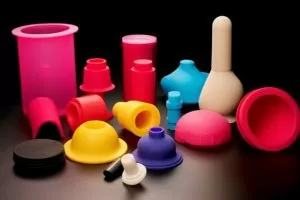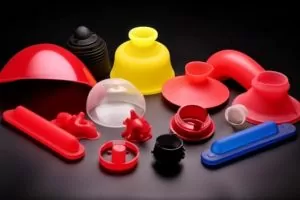Introduction
Automation technology has caused a significant shift in the silicone rubber molding process. This innovation enables the automation of various silicone rubber molding techniques like liquid silicone rubber (LSR) injection molding and thermoplastic injection molding, as well as other related technologies. By making it possible to automate these processes, new manufacturing standards can be set – ones that boost efficiency, scalability and accuracy levels.

Automation doesn’t just make production speedier: integrating automated systems also means that quality levels remain constant throughout a production run (no matter how long it is), there are fewer mistakes made by humans along the way; plus with this type or robotics added into mix one could even mass produce components such as those found within an automobile engine block if needed!Machines capable enough not only perform simple tasks like injecting uncured liquid silicon into molds before they’re baked solid but perform more complex ones such cavity filling precisely once this step complete take newly formed cured part out so next cycle may begin again.
Popular not only because customers want products made from flexible materials (such as medical devices or as electronics casings) but demand seems likely grow steadily over time too — so companies have invested heavily in research development departments trying stay ahead game when it does happen. The future looks bright for automated silicone molding; lots still being learnt about possibilities today’s cutting-edge machines bring with them. Industry insiders believe we stand at beginning something truly special here – one where productivity skyrockets sustainability becomes norm across all sectors thanks largely due two factors: increased customization options available alongside improved materials’ properties.
The Evolution of Liquid Injection Molding Process
The introduction of liquid injection molding (LIM) has completely transformed how silicone rubber products are made, representing a major advance in molding technology. Instead of using traditional methods like compression or transfer molding — which can struggle with intricate designs — LIM uses precision machinery to inject uncured liquid silicone rubber (LSR) into specially crafted molds. Once inside the mold, the LSR is cured; when it comes out again it’s as finished parts – flexible and robustly made. What sets LIM apart from other silicon rubber injection molding techniques is its ability to produce items with complicated geometries, close tolerances, and great material properties: all attributes much prized in many different industries.
The Role of Liquid Silicone Rubber (LSR) in Enhancing the Molding Process
At the heart of liquid injection molding lies LSR – short for Liquid Silicone Rubber. This type of silicone is platinum-cured, meaning it vulcanizes at room temperature to create a material that’s not only flexible but also chemically stable and resistant to heat. Its low viscosity makes LSR perfect for injecting into molds: it flows easily and fills even tiny spaces with great accuracy. Because LSR works so well with many different materials, manufacturers can use it to make products for lots of industries such as electronics, medicine or cars – all areas demanding high quality control.

Key Components of Liquid Injection Molding
Liquid Silicone Injection Molding
To guarantee an even mixture of the two-part LSR and accurate delivery into the injection molding machine cavity, liquid silicone injection molding relies on specialized machinery—both dynamic mixing equipment and injection molding machines that are capable of handling LSR’s distinct properties.
Injection Molding Process and Its Automation
Automation has had a big impact on the injection molding process, with advancements in technology like auto dosing, material prep and controlling injection parameters. Thanks to these automated systems – which also monitor progress full-time so they can make any necessary tweaks along the way – things run better than ever before; plus there is less chance for errors meaning products look great too!
The Benefits of Automating the Injection Molding Process
Automating the injection molding process brings numerous advantages, including:
Increased Efficiency: Automation reduces cycle times and increases throughput, enabling mass production with minimal manual intervention.
Enhanced Precision and Consistency: Automated systems ensure that each part is produced with uniform quality, reducing the variability associated with human operation.
Cost Reduction: Although the initial investment in automated equipment can be high, the long-term savings in labor costs, reduced waste, and increased production speed make it a cost-effective solution.
Improved Safety: Automation minimizes the need for direct human interaction with the machinery, reducing the risk of workplace accidents.
The continuous drive for perfection in manufacturing is clearly demonstrated by how the liquid injection molding process has developed through the incorporation of both liquid silicone rubber and automation technologies. Such progress means that firms using this technique can now fulfill rising requirements for items made from silicone rubber materials – while also boosting levels of both quality and efficiency at the same time; scalability is no longer an issue either.

Technological Advancements in Silicone Molding
The field of silicone molding has seen significant technological advancements aimed at improving efficiency, precision, and the overall quality of the manufacturing process. Among these, the cold runner injection solution and various automation features stand out as key innovations, alongside the versatility offered by different molding methods such as silicone compression molding and rubber injection molding machines and vacuum compression molding.

Cold Runner Injection Solution and its Advantages
The cold runner injection solution is a significant technological advancement in the silicone molding industry. Unlike traditional methods, this system holds the silicone liquid in the runner until it reaches the mold cavity. There are several advantages to using this approach:
Less material waste: The cold runner system reduces material waste by preventing the silicone from curing in the runner. This not only saves money but also helps protect the environment.
Enhanced Process Control: The system allows for better control over the injection process, ensuring consistent quality and minimizing the risk of defects.
Increased Production Efficiency: By eliminating the need to trim and remove cured silicone from the runner, the cold runner system streamlines the production process, leading to faster cycle times.
Automation Features: Auto Loading, Auto Discharging, and Auto Mold Cleaning
Automation has revolutionized the silicone molding process with features that enhance productivity and reliability:
Auto Loading: Systems automatically loading silicone material into the injection unit decrease manual labor while boosting feeding precision.
Auto Discharging: Finished parts are removed from the mold automatically, enabling continuous production with minimal human error or part harm possible.
Auto Mold Cleaning: Between cycles, automated cleaning keeps molds in good condition for longer periods – reducing downtime substantially — while also safeguarding quality so finished products always meet expectations.

Conclusion
The progress made in silicone rubber molding shows how automation and technology have changed this industry. Automation can now do things such as load and clean molds automatically, using cold runners or vacuum compression to get the best results. This has brought huge benefits like speed, accuracy and cost efficiency.
There will be much more to come: AI and machine learning may soon help with fixing machines before they break down (predictive maintenance) or finding ways of working better (process optimization). New types of material plus clever ways of using them will also mean exciting possibilities – maybe even opening up whole new markets!Environmental concerns are driving change too; companies want not just greener production methods but also machinery which consumes less power overall (‘energy efficient’) plus does a good job recycling any waste materials generated during molding processes.
In conclusion, the silicone rubber molding industry is set for a future where technology and automation continue to play pivotal roles. These advancements promise not only to meet the current demands of various industries but also to anticipate future challenges, ensuring that silicone rubber remains an indispensable material in our everyday lives and in the technological innovations of the future.



